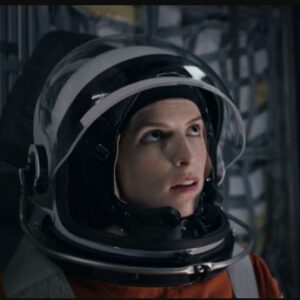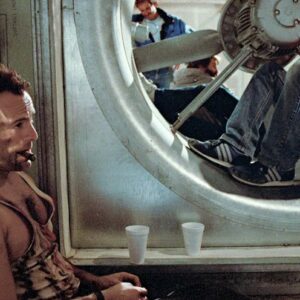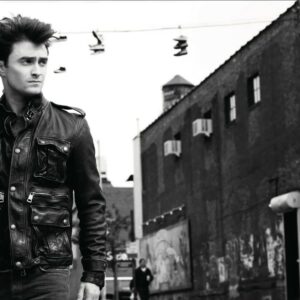Introduction
Bruce Willis is one of Hollywood’s most iconic action stars. He’s the guy who made us believe that a regular cop could single-handedly take on a group of terrorists in Die Hard (1988), and, decades later, still holds a special place in our collective cinematic memory. For fans of action films, Willis has always been the quintessential hero—stoic, self-assured, and resourceful. But behind the Hollywood persona, there’s a far more complex actor who’s built his career not on raw, visceral transformation but on an intuitive, almost effortless connection to his characters.
Despite his fame and widespread recognition, Willis has never been a typical “method actor.” While other actors may lock themselves away in a room to live as their characters for months at a time, Bruce Willis has always preferred a different approach. Instead of immersing himself entirely in his roles, he embraces a more naturalistic style that emphasizes understanding the essence of his character while staying true to his own instincts.
In a series of recent interviews, Bruce Willis opened up about his thoughts on the often-controversial technique of method acting, providing fans and fellow actors a fascinating insight into his approach. For a man whose career has spanned decades and who’s earned accolades for both his dramatic and action roles, his perspective is one worth considering.
What is Method Acting?
Before delving into Willis’s views on the subject, it’s essential to understand what method acting entails. The technique has its roots in the teachings of Konstantin Stanislavski, a Russian theatre practitioner whose system laid the groundwork for modern acting. Stanislavski’s approach emphasized emotional authenticity, asking actors to draw from their own personal experiences to better understand and embody their characters. Over time, this evolved into what we now know as method acting.
The method is often associated with actors like Daniel Day-Lewis, Robert De Niro, and Marlon Brando—performers who are known for their deeply immersive and transformative approaches. Method actors tend to live and breathe their characters, sometimes even altering their personal lives to mirror those of the people they portray. For instance, Daniel Day-Lewis is known for staying in character even off-set, living as his role during the entirety of filming. This type of intense commitment to a character can result in unforgettable performances, but it can also come at a significant personal cost.
Willis’s Stance on Method Acting
Bruce Willis’s approach to acting stands in stark contrast to the extremes of method acting. While he has great respect for the skill and dedication of method actors, he does not subscribe to their immersive approach. In interviews, Willis has made it clear that he doesn’t believe in living as the character 24/7, even after the cameras stop rolling.
“I think it’s a different kind of thing,” Willis said in one conversation. “For me, it’s more about understanding the character, the motivations, and the emotional layers, but without letting the role take over who I am. I don’t believe in becoming the character off-screen.”
While many actors feel the need to fully embody their roles, to the point where they are inseparable from the character, Willis prefers a more intuitive process. He believes that an actor’s job is not to lose oneself in a role but to bring a unique part of themselves into every character they play.
Why Willis Prefers a Different Approach
One of the most compelling aspects of Willis’s acting philosophy is the notion of balance. For him, acting is not about completely shedding his identity or sacrificing his personal life for the role. Instead, it’s about connecting with the character on a deeper emotional level while still maintaining his own sense of self.
In various interviews, Willis has explained that the key to his approach is understanding a character’s motivations and intentions. Once he grasps the core of who the character is, he then allows himself to be guided by his own instincts and understanding of the story. “I don’t need to live in the shoes of the character off-camera,” Willis says. “I need to understand them, feel them, and then do what feels right when I’m on set.”
This approach allows Willis to maintain a sense of control over his performances without losing touch with the world outside of the film. In fact, he believes that keeping a firm boundary between his on-screen persona and his personal life is what enables him to bring depth to his roles without sacrificing his emotional well-being.
The Balance Between Craft and Personal Life
Perhaps one of the most striking aspects of Willis’s acting philosophy is his belief in preserving a balance between his craft and his personal life. While some actors might throw themselves entirely into a character, Willis has always placed a strong emphasis on maintaining his relationships and protecting his mental health.
Method acting, by its very nature, can be an all-consuming endeavor. If not carefully managed, it can blur the lines between the actor and the character they’re playing, leading to emotional exhaustion or, in extreme cases, personal crises. Willis is cautious about this potential pitfall, understanding that the intensity of method acting can, at times, create a divide between the actor and their real-world connections.
“Your personal life is incredibly important,” he asserts. “If you lose yourself in the role, if you forget who you are, it can impact the people around you. That’s not something I’m willing to do. I think you need to protect your personal space, your family, your friends. That’s the real work.”
This belief in balance has been a guiding principle throughout Willis’s career, allowing him to build lasting relationships both inside and outside of Hollywood. He’s not just a talented actor but a family man who values the time he spends away from the spotlight. His commitment to his personal life may explain, in part, why he’s been able to maintain a long and successful career while also preserving a sense of authenticity and stability.
Willis’s Career and the Impact of His Approach
Despite not adhering to the rigorous demands of method acting, Bruce Willis’s career has been a resounding success. From his early days on the popular TV series Moonlighting to his explosive action roles in Die Hard and The Fifth Element, Willis has proven that there is no one-size-fits-all approach to acting.
In fact, his ability to seamlessly transition between comedic and dramatic roles speaks volumes about his versatility. Whether he’s playing a wisecracking cop, a tortured hero, or a romantic lead, Willis brings a level of emotional authenticity to each role without needing to completely transform himself. His characters, from Die Hard’s John McClane to The Sixth Sense’s Dr. Malcolm Crowe, are deeply human, grounded in a sense of vulnerability and strength that make them compelling.
By rejecting the extremes of method acting, Willis has carved out a unique space for himself in Hollywood. He’s demonstrated that an actor doesn’t need to completely lose themselves in a role to create something truly memorable. Instead, by staying connected to his own instincts and maintaining a healthy boundary between his professional and personal life, Willis has proven that authenticity doesn’t require sacrificing one’s sense of self.
The Debate on Acting Styles
The conversation about acting styles—method acting versus more naturalistic approaches like Willis’s—is an ongoing debate in the industry. Some argue that the immersive nature of method acting produces the most genuine performances, citing the intense, transformative work of actors like Robert De Niro and Daniel Day-Lewis. These actors’ commitment to their roles is undeniably impressive, and their performances are often lauded as some of the best in film history.
However, there are others, like Willis, who believe that the most compelling performances come from staying true to oneself, using intuition and emotional connection rather than total immersion. While method acting might produce stunning results in some cases, Willis’s career shows that there are other ways to achieve emotional depth and authenticity. Whether it’s through instinct or intellectual understanding, what matters most is the emotional truth an actor brings to their work.
Conclusion
Bruce Willis’s perspective on method acting serves as an important reminder to aspiring actors: there’s no one “right” way to approach a role. While the immersive techniques of method acting have garnered their share of praise, Willis’s success proves that emotional authenticity and instinctive performances can be just as powerful. By staying true to himself, he’s managed to create a diverse and impactful body of work that resonates with audiences on a profound level.
In the end, what’s most important is not the technique itself but the connection an actor creates between themselves, their character, and their audience. Bruce Willis may not live as his characters off-screen, but through his intuitive approach to acting, he’s given us some of the most memorable, heartfelt performances in modern cinema. His career offers a reminder that sometimes the best way to embody a character is simply by being yourself—while still reaching deep into the well of emotional truth that every great performance requires.





